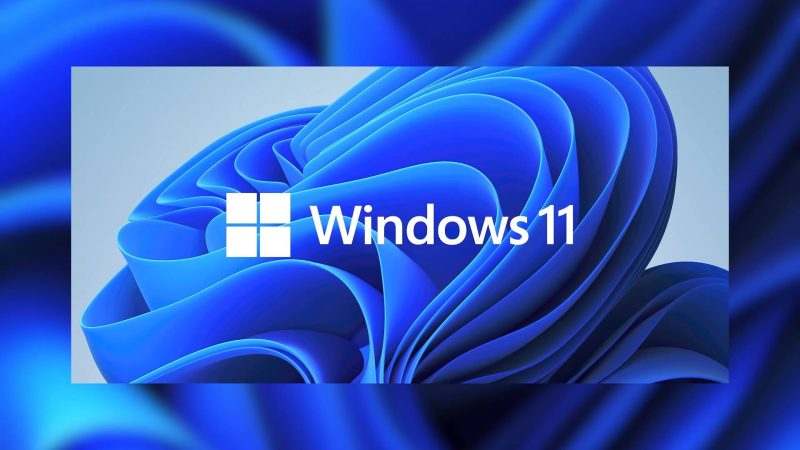Windows: How To Fix A Stuck Windows Update

Usually, we don’t have much, if any, influence over how Windows Update goes about its business.
The majority of Windows 11/10 computers are configured to automatically apply critical updates, whereas Windows 7 and Windows 8 typically apply these fixes on Patch Tuesday evening, despite the fact that we may occasionally check for and manually install updates.
During shutdown or startup, installing a patch or possibly a service pack can cause the update installation to become stuck, also known as freeze, lock up, stop, hang, or clock. It’s obvious that something needs to be done because Windows Update takes so long.
One or more Windows updates are likely stuck or frozen if one of the following messages appears repeatedly for an extended period of time:

You might have seen Part 1 of 1 or Part 1 of 3 before or a message that looks similar to the image above. You might not see anything on the screen for a while. Depending on the Windows version you’re using, there might also be some wording changes.
Cause of a Frozen or Stuck Windows Update
There are a number of reasons why the installation or completion of one or more Windows updates may stall.
The majority of the time, these issues are caused by a software conflict or a pre-existing problem that was not discovered until the updates began to be installed. They are much less likely to be caused by a Microsoft update error, but it does happen.
During Windows updates, any of Microsoft’s operating systems, including Windows 11, Windows 10, Windows 8, Windows 7, Windows Vista, Windows XP, and others, could freeze.
A known Windows bug can cause Windows Update installations to freeze in this manner, but it only affects Windows Vista and only if SP1 has not yet been installed. If your computer falls into this category, resolve the problem by installing Windows Vista SP1 or later.
Confirm That The Updates Are Indeed Stuck
Before proceeding, ensure that the updates are indeed stuck, as some Windows updates can take several minutes or longer to configure or install. Attempting to solve a problem that does not exist may be counterproductive.
Windows updates are likely to be stuck if nothing appears on the screen for three hours or more. If you’re still puzzled after all that time, check the activity light on your hard drive. There will be either no activity (stuck) or frequent but brief flashes of light (not stuck).
The updates are likely to hang before the 3-hour mark, but this is a reasonable amount of time to wait and longer than we’ve ever seen a Windows update take to install successfully.
How to Fix a Stuck Windows Update Installation
Step 1. Press Ctrl+Alt+Del.
If you press the Ctrl+Alt+Del keyboard shortcut while the update is installing, you might find that it hangs at a specific point and your Windows login screen appears.
If so, simply log on as usual and wait for the updates to finish installing. If your computer restarts after pressing Ctrl+Alt+Del, do well to take note of Step 2 below. If nothing happens (which is most likely), proceed to Step 2.
Step 2. Complete Restart.
Restart your computer by pressing the reset button or turning it off and back on with the power button. Windows will restart normally and complete the update installation.
If the Windows update installation is truly frozen, the only option is to hard reboot.
Depending on how Windows and the BIOS/UEFI are set up, you may have to hold down the power button for several seconds before the computer will shut down. Removing the battery from a tablet or laptop may be necessary.
If you’re using Windows 11, 10, or 8, and you’re taken to the sign-in screen after restarting, tap or click the power icon in the bottom-right corner and select Update and Restart, if available.
If you’re taken to the Advanced Boot Options or Startup Settings menu after restarting, select Safe Mode and follow the instructions in Step 3 below.
Step 3. Start Windows in Safe Mode.
This special diagnostic mode of Windows only loads the drivers and services that Windows absolutely requires, so if another program or service is incompatible with one of the Windows updates, the installation may proceed normally.
If the Windows updates install successfully and you remain in Safe Mode, simply restart to enter Windows normally. Here’s how to start windows in safe mode.

Step 4: Run a Complete System.
Complete a System Restore to reverse the effects of the improperly installed Windows update.
Since you can’t access Windows normally, try doing this from Safe Mode if you can. If you’re unsure of how to start in Safe Mode, refer to the link in Step 3.
Make sure to select the restore point Windows created just before the update installation when performing a System Restore.
Your computer should be returned to the previous state it was in prior to the updates starting, assuming a restore point was created and System Restore is successful. Change Windows Update settings if the issue started after an automatic update, such as what happens on Patch Tuesday, to prevent the issue from recurring on its own.
Step 5. Try System Restore.
If you can’t get to Safe Mode or the restore from Safe Mode failed, try System Restore from Advanced Startup Options (Windows 11, 10 & 8) or System Recovery Options (Windows 7 & Vista).

You can try this even if Windows is completely unavailable because these tool menus are accessible from “outside” of Windows.
Also: Downgrading from Windows 11 to Windows 10: How To
If you’re using Windows 11 through Windows Vista, System Restore is only accessible from outside of Windows. In Windows XP, this option is not accessible.
Step 6. Start the “automatic” repair procedure on your computer.
A more thorough repair procedure may be necessary for this instance of a Windows update even though a System Restore is a more direct way to reverse changes.
- Windows 11, 10, and 8: Try a Startup Repair. If that doesn’t work, try the Reset This PC procedure (non-destructive, of course).
- Windows 7 and Windows Vista: Try the Startup Repair process.
- Windows XP: Try the Repair Install process.
Step7. Use a free program to test the memory on your computer.
The patch installation freezes might be brought on by deteriorating RAM. Fortunately, memory is really easy to test.
Step 8. Update BIOS.
Although it’s not frequently the cause of this issue, an outdated BIOS is a possibility.
A BIOS update might be able to fix the problem if one or more of the updates Windows is attempting to install affects how Windows interacts with your motherboard or other integrated hardware.
Step 9. Run a Windows clean install.
A clean install entails completely wiping the hard drive where Windows is currently installed and then reinstalling Windows on that same hard drive from scratch. It goes without saying that you should avoid doing this if you can help it, but if the fixes before this one didn’t work, this is a very likely solution.
Although it might seem likely that reinstalling Windows and these specific Windows updates will result in the same issue, this isn’t typically the case. A fresh install of Windows, swiftly followed by the installation of all available updates, typically produces a computer that is fully functional because the majority of lockup issues brought on by Microsoft updates are actually caused by software conflicts.




